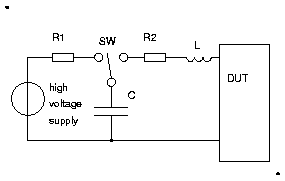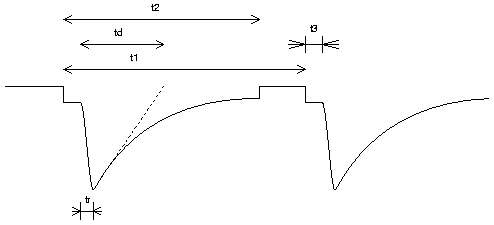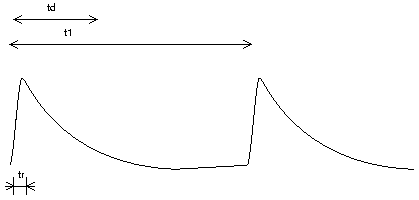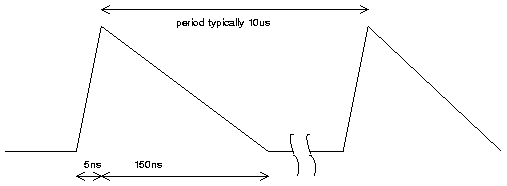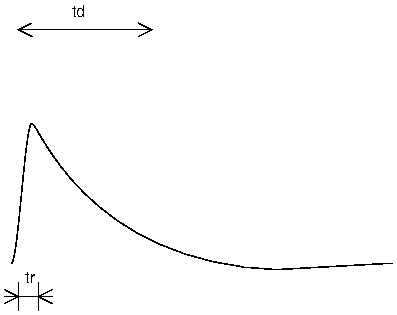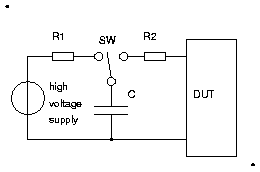
Fig. 1: MIL-STD883E HMB model
C=100pF, R2=1500 Ohm
In MIL-STD883E the power supply charges C1 via R1 to several kV. The energy is stored in a capacitor C with 100pF. When the switch is thrown to the right side the energy stored in C discharges into the device under test (DUT) through R2.
Since the ESD protection clamps the voltage to some 10V the peak current flowing through R2 can be estimated as:
Ipeak = V0 / R2
Ipeak = V0/ 1500 Ohm
(Example: V0=8kV -> Ipeak=5.33A)
The voltage at C and thus the current though R2 decays approximatelly exponentially with a time constant of:
T = RC
I(t) = V0/R2 * exp(-t/T)
I(t) = V0/R2 * exp(-t/150ns)
(This is not the full truth because there are some parasitic inductances involved that add some ringing to the signal. MIL-STD883E allows up to 10ns rise time at the DUT. But for a rough estimation of the energy delivered to the DUT the description of I(t) as a exponentially decaying current is not too bad.)
During the ESD test the DUT is unsupplied. ESD tests give no indication of latch up robustness!
